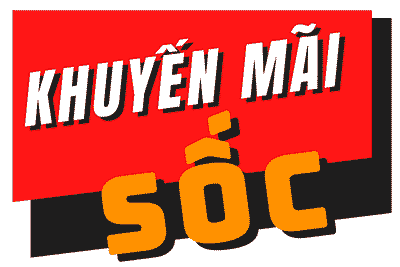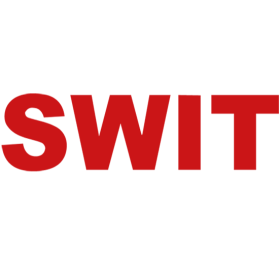In the realm of logistics and supply chain management, optimizing carriage inwards is a critical component for achieving cost savings. This process involves the strategic analysis and adjustment of the expenses incurred when goods are transported into a warehouse or facility. By scrutinizing this aspect of delivery expenses, businesses can uncover hidden inefficiencies and implement changes that lead to significant financial benefits. From negotiating better rates with carriers to streamlining the receiving process, there are numerous ways to optimize these costs.
Efficient Capture of Shipping Invoices and Receipts
See the step-by-step result in a spreadsheet and visualize your work. For students, professionals, and casual users alike, Sourcetable serves as an educational and operational tool that simplifies complex calculations. By observing the AI’s logic, users can learn and replicate similar calculations independently, which is beneficial for academic studies and professional growth. Utilizing analytics tools provided by platforms like ShipScience can help identify patterns in unexpected expenses, enabling you to address root causes and prevent future occurrences. In case there’s room in the schedule, you can add orders as soon as they arrive and readjust the route to match it. The app, on the other hand, is how the software tracks drivers as they move on the map.
Negotiating with Carriers to Minimize Shipping Costs
- In the dynamic world of e-commerce, the difference between a profitable business and financial loss is often hidden in the details.
- And that means you can cover at least some of the cost of urgency by transferring some of the expenses to your customers.
- This ensures the delivery charges cover necessary expenses, aiding in setting competitive prices that attract customers while maintaining profitability.
- For instance, a delivery service might charge $10 for distances up to 5 miles, $15 up to 10 miles, and $25 for up to 20 miles.
This affects the cost of transportation since it determines the number of pick-up stops your drivers will have to make to complete their route. That’s why many companies are using field service management software. If your business relies on field service, then your transport rate will depend on getting your employees to customers.
Transportation Costs in Logistics
While these services may incur extra costs, they offer enhanced security and peace of mind for both you and your customers. Lightweight and compact packaging minimizes dimensional weight charges and reduces overall expenses. Moreover, eco-friendly packaging materials not only lower costs but also promote sustainability, aligning with modern consumer preferences. Fyle allows for precise categorization of delivery costs (e.g., “Freight-In,” “Shipping Expense – Customer Deliveries,” “Postage”).
- A reliable carrier that consistently delivers on time can save your business money by reducing delays and ensuring customer satisfaction.
- This amount increases the cost of the inventory and, consequently, the cost of goods sold.
- By considering these strategies and examples, businesses can approach carriage inwards not just as an expense to be minimized, but as an opportunity to add value and gain a competitive edge.
- To illustrate, consider a company importing electronics from abroad.
- Get an accurate information about parcel on each stage of the way, even if the addressee is on the other side of the continent.
Calculate Delivery Fee
More than 55 percent of rural consumers are willing to wait seven days or more for deliveries as long as shipping is free. For many e-shops, utilizing 3PL (third-party logistics) providers can be a path to optimizing costs and increasing efficiency. Fulfillment providers often offer economies of scale and specialized expertise that can be challenging to achieve internally. Sourcetable, an AI-powered spreadsheet, streamlines the process of performing complex calculations.
We unites only top ranking carriers with wide internal networks. Send and receive parcels equally conveniently in the largest and smallest locations. Get easy one-stop access without registration – enter the information and receive ready-made documents without leaving home.
For example, on January 31, we make a cash payment of $100 for the cost of goods delivery to one of our customers who are outside of the city. This $100 delivery cost is our responsibility as we have a free delivery promotion during January for the customer that purchases our merchandise goods for a certain amount upward. This freight-in account is similar to the purchases account in which it will be cleared at the end of the accounting period when we calculate the cost of goods sold. About 50 percent of respondents say they track the status of orders to ensure that the shipment is progressing and remains on time. While late deliveries are a source of dissatisfaction, about 85 percent of respondents say they do not consider an order “unacceptably late” if it arrives within one to two days of the expected delivery time.
Fast fulfillment will mean a higher last mile cost for you, as well. So most companies build an agile delivery that can balance both. Taking roads with less traffic, better access points and stop orders. And in this part, we’re going to show you every aspect of delivery that raises those costs. Distance is just one thing that affects the price of transportation.
Some shippers offer consumers “free” shipping as part of a flat-fee subscription program—in which consumers pay, say, $10 to $15 per month after discounts for delivery expense committing to annual plans. Another approach could involve carefully assessing the spending thresholds at which it is viable for consumer orders to qualify for free shipping. Additionally, shopping credits could be offered as incentives to help nudge consumers toward slower or more consolidated deliveries. Understanding the dynamics of a shipper’s specific consumer base can be crucial, as some subsectors (for example, higher-income consumers) could be marginally more willing to pay for shipping.
This cost is incurred when a company receives goods from its suppliers and includes expenses such as shipping fees, insurance during transit, and handling charges. These costs are not merely ancillary; they directly affect the gross profit of a company by increasing the cost of goods sold. For businesses operating on thin margins, understanding and managing carriage inwards can be the difference between profit and loss.














